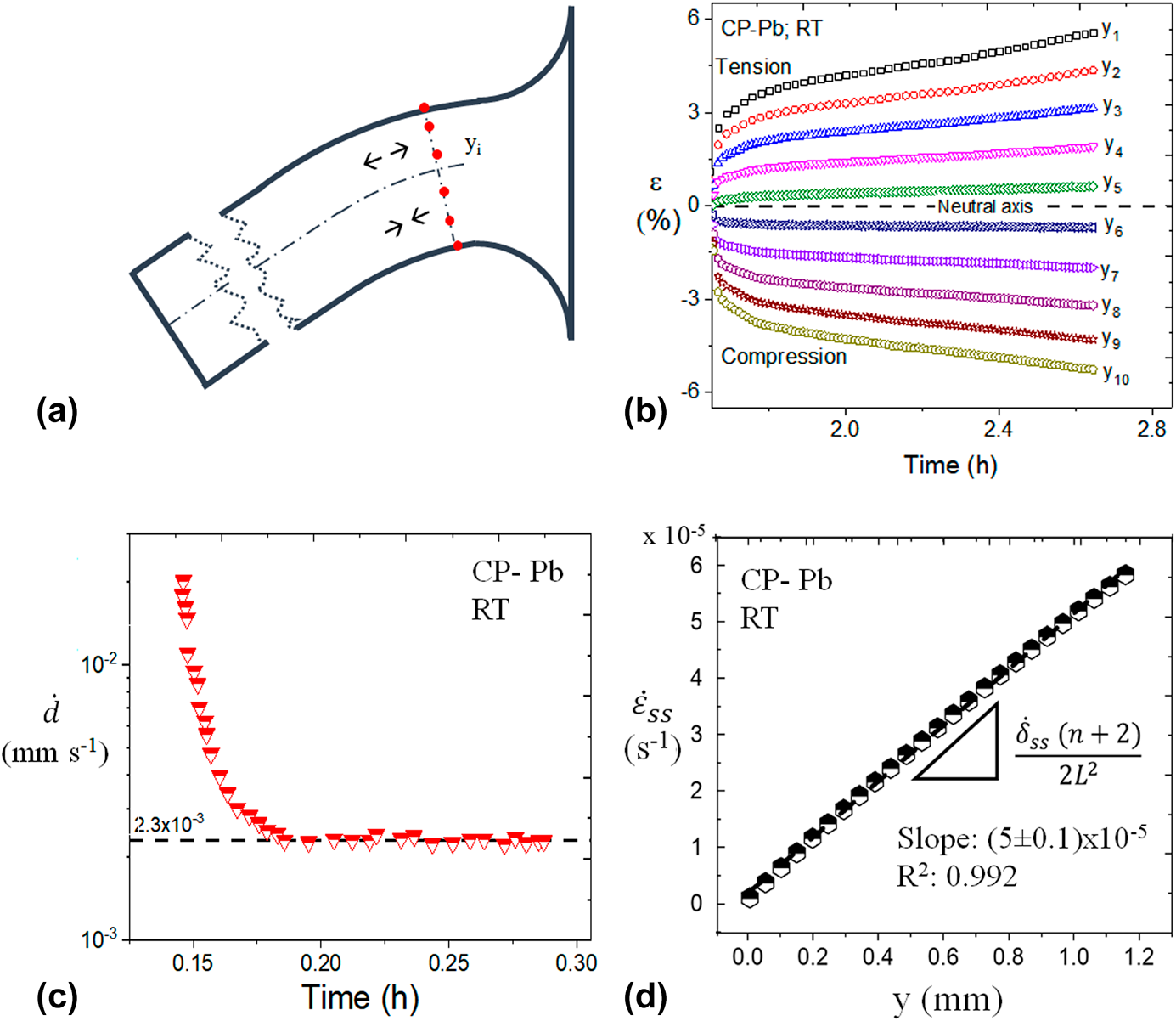Article contents
High Throughput Determination of Creep Parameters Using Cantilever Bending: Part I - Steady-State
Published online by Cambridge University Press: 19 February 2020
Abstract

Variation of stress across the length and thickness of a cantilever during creep allows obtaining multiple pairs of strain rates and stress under steady-state condition. This work applies digital image correlation (DIC) and conjugate analytical models to obtain several such “strain rate–stress” pairs during steady-state creep by testing a single cantilever at a constant applied load. Furthermore, these strain rate–stress pairs are used to accurately determine the stress exponent of the material (e.g., Al and Pb). In addition, an empirical observation of plotting strain rate as a function of stress at fixed strain during primary creep for estimating stress exponent is extended to bending creep, wherein strain rates of the points in the cantilever lying on an iso-strain contour were plotted against the moment at the point to determine stress exponent. This study, thereby, proves that the “bending creep–DIC” combination is a high throughput test methodology for studying steady-state creep.
Keywords
- Type
- Article
- Information
- Copyright
- Copyright © Materials Research Society 2020
References
- 9
- Cited by




